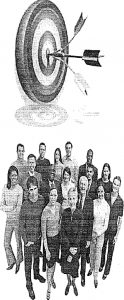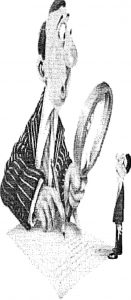ADVANCED RIGGER
Course Description

Advanced Rigger training course covers safe
operating & rigging procedures/techniques
to maintain safe job site rigging operations.
Course Objectives

- Train the participants on how to ensure safe lifting operations are performed through effective supervision.
- Use and inspect rigging equipment in accordance with British / ASME and industry standards.
- Enable to supervise the examination & maintenance of all loose lifting equipment within his area of responsibility.
- To maintain a Lifting equipment register and copy of certificates for each piece of lifting equipment under his control.
- To ensure personal under him are competent to perform the job & the color code system is implemented.
Who Should Attend

Riggers, Supervisors, Operators,
inspectors and other personnel who
require a thorough knowledge of
lifting gears & equipments.
Certification Requirements

Complete a 5 day training program. Pass a written / practical examination.Have atleast a minimum of 1 year experience
or exposure on working in a capacity of
operation, maintenance, repair, inspection,
safety or supervision with rigging.
The personal who attend should possess the
ability to write and read English to the
minimum.
Pass a written examination – (100 Objective
questions) – with an 80% pass mark.
Perform a practical assessment on rigging.
Course Outline

- Introduction.
- Glossary of Terminology.
- Legislation – An Overview.
- Responsibilities. Sample Lifting Risk Matrix.
- General Lifting Procedures.
- Basic 9 Point procedure.
- Load Balance & Stability.
- Selection & Use of lifting machines.
- Selection &Use of Lifting gear.
- Sling Types.
- Sling Configurations.
- Rated Assumptions & Deviations.
- Slings used in combination.
- Slinging & Safe Working Loads
- Load Factors & Slinging.
- Sample Calculations.
- Identification & Color Coding.
- Factor of Safety.
- Rule of thumb formulas to calculate WLL.
- Slings & Hitches.
- Sling Angles. Load Angle Factor

- Angle & Sling Leg Loading.
- Horizontal Angle & Sting capacity.
- Horizontal Compressive Forces.
- Capacity of Bridle Hitches.
- Centre of Gravity.
- Sling Tension Calculation.
- Determining Sling loading-Using capacity chart.
- Sling Tension calculation formula.
- Mode Factor.
- Using measurements-Unequal legs.
- Drifting load calculation. Overlooked sling angle.
- Recommended methods of slinging.
- Criteria for Sting selection.
- Sling Rating.
- Safe stinging practices &Tag Line.
- Webbing slings.
- Six basic flat web sling types.
- Abrasion & Sharp Edges. Terminal Fittings.
- Soft Eyes & Web Sting Shackles.
- Information Exchanged-User & Supplier.
- Conformity & Test certificates.
- Ply & Capacity of Webbing sling.
- Storage & Handling.
- In-service Inspection.
- Safe Use of Webbing Sling.
- Type of Chain Slings.
- Principles for the selection of chain stings.
- Chain Slings – 8 important points.
- Wire Rope Slings.
- Type of Wire Rope Slings.
- Various types of end terminations.
- Wire Rope Classification.
- Wire Rope Lays.
- Wire Rope construction & Grades.
- Lay Length.
- Wire Rope Seizing & Cutting.
- Wire Rope Installation.
- Unwinding steel wire rope from coil.
- Wire Rope inspection & Survey of removal.
- Wire rope measurement.
- Wire rope drums & sheaves.
- Flare Angle & Groove Depth.
- Unloading of steel wire ropes.
- Storing of Steel Wire ropes.

Training Method
- Language for the training will be in English.
- Mode of Delivery is via PowerPoint presentations /Videos/ Interactions Group Exercises.
- A highly participative course, with a practical inspection of rigging accessories & practical rigging.
- Objective type questions for the written exam will be in English.
